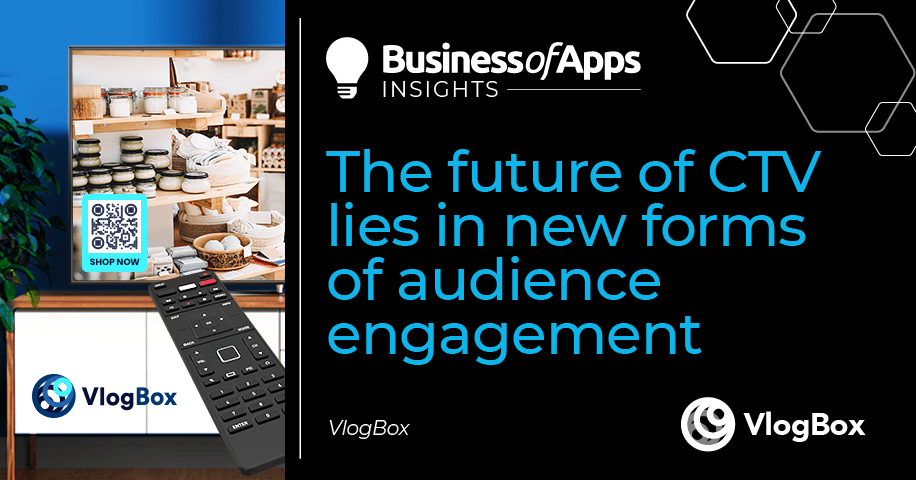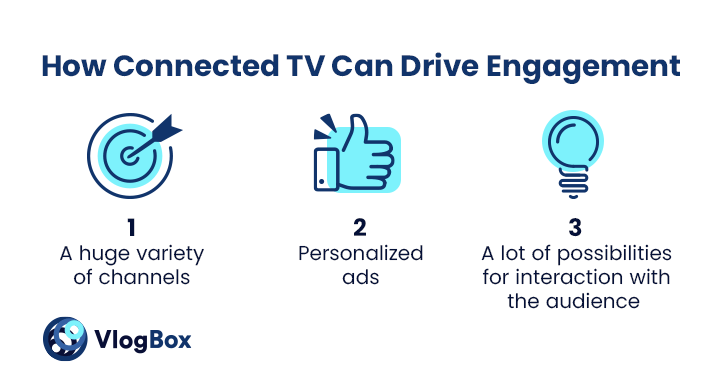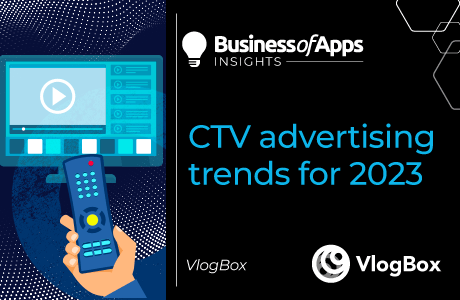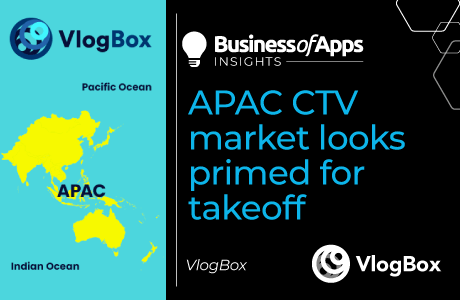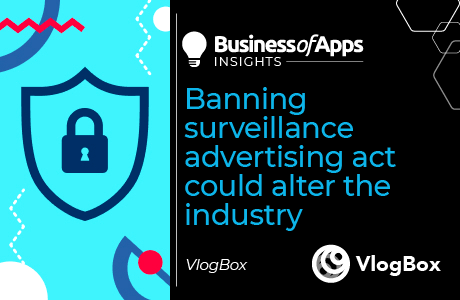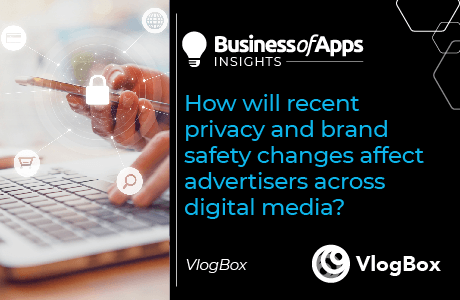Connected television (CTV) has given advertisers a huge array of choices to work with. The ad industry in the U.S. and beyond has enjoyed significantly increased revenue since CTV exploded in popularity during the pandemic, a trend that looks set to continue. Under that umbrella, it’s time to consider new forms of audience engagement.
Why the CTV-based content draws higher engagement
Over 60% of people now say their definition of TV includes streaming services such as YouTube, Netflix, and others, meaning that traditional terrestrial TV now plays the role of second fiddle. Streaming services are now the primary choice for video content which provides the paying public with what they want, but also opens up greater opportunities for advertisers via increased engagement.
Viewers experience greater engagement when watching CTV-based content compared with traditional TV. This is down to three reasons. Firstly, there is far greater scope for personalization on CTV-based ads, which makes the content you can produce far more interesting to the average consumer. Secondly, and most importantly, there is a huge variety of channels and content one can easily find within CTV app stores as well as through in-channel ads targeted precisely to a relevant audience. And thirdly, besides product placements and traditional programmatic ads, there’s more and more room for interaction, which is very similar to mobile ad stories.
How CTV can drive engagement
Source: VlogBox
The evolution of CTV ad formats
The amount of options ad creators have at their disposal is considerable and new formats are being created constantly. One example is dynamic overlay, where existing video content is placed over another video and then personalized based on data gathered about their specific demographics and interests. Then there’s voice-integrated video, where consumers can direct ads using their voices to follow prompts on their screens, and sequential ads that run over multiple slots. Actionable video, which is now one of the most promising CTV ad formats in terms of CTV conversions, connects viewers to brands through external links, opening potential click-to-buy opportunities. After the pause ads attack, Hulu considers sliding the ad within a video screen or bringing more interaction, e.g., calling for clicks on the objects and getting a discount code.
CTV is usually about dual screening, which means the viewers are subjected to both CTV/OTT and mobile sway, raising the chances of user interaction. We can look forward to increased user choice in ad format and the inclusion of more QR codes for direct product purchases, designed with multiple device users in mind. Innovative ad formats together with a contextual approach and dual screening can boost engagement up to unexpectedly high figures. The time when we can click on the character’s coat and order it while watching a film is very close, as CTV has a lot of potential as a direct sales medium.
How CTV changes consumer behavior
Connected TV ads alter consumer behavior of almost all age groups, as the medium enhances the audience experience vis a vis a brand via diverse types of advertising.
Unlike traditional linear TV, Connected TV has shown better performance in a number of key indicators, such as brand searches, product purchases, store visits, etc. AVOD is on the rise due to the consumer preference for watching their favorite series in a free ad-supported environment. This preference is expressed by over 70% of US users, while almost 65% are reducing spending on CTV services. Connected television gives brands an opportunity to squeeze into a brand-friendly ecosystem – a place where viewers are ready to accept and interact with them.
At the same time, the rules of getting a positive response to an ad are the same as for any other medium – advertisers need to generate more creative ideas and ads that will draw more viewers’ attention, remain non-offensive, and encourage interaction with customers specifically when one shows interest, for instance through clicks.
The future is bright
Interactive ads work because they retain user attention for up to 85 seconds longer than conventional ad content, which is a huge difference. On top of that, they enjoy 3,5% higher engagement rates as well. Interactivity combined with video content is an effective tool for marketers, and up to a third of viewers go on to attain ‘valued customer status’ after watching a video campaign. All in all, it’s the right time for innovation in CTV advertising, and the future looks more promising every day as more users decide to cut the cord and focus on CTV content consumption.
Fire Up Your Growth!
Moburst propelled leading brands like Google, Reddit, and Uber to the next level. Let’s ignite your Success journey today!
Claim Your FREE Growth Fuel!


